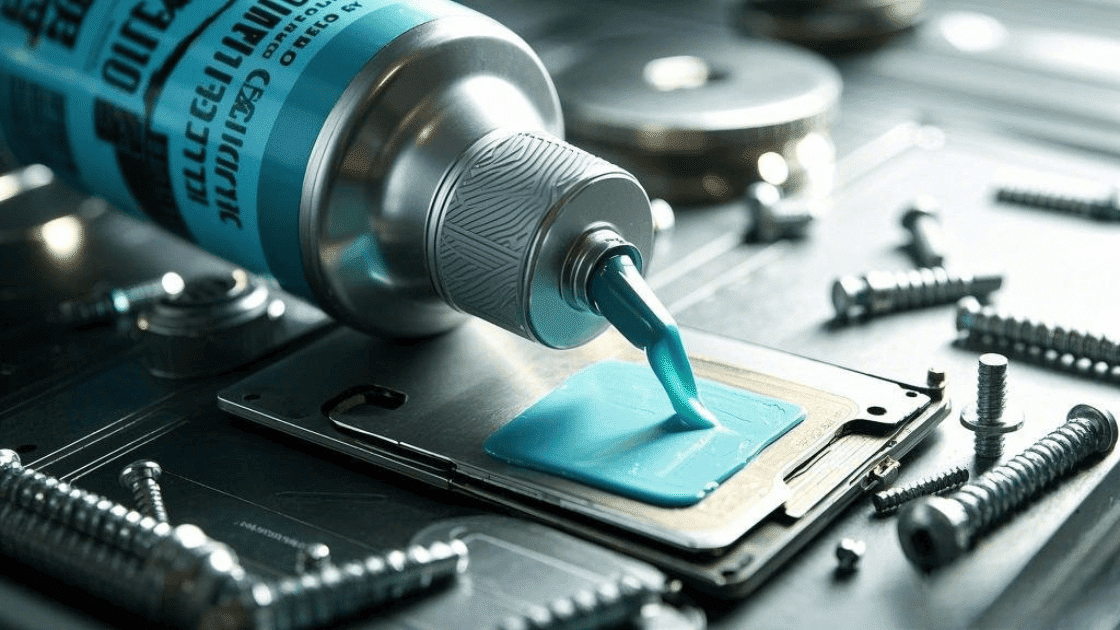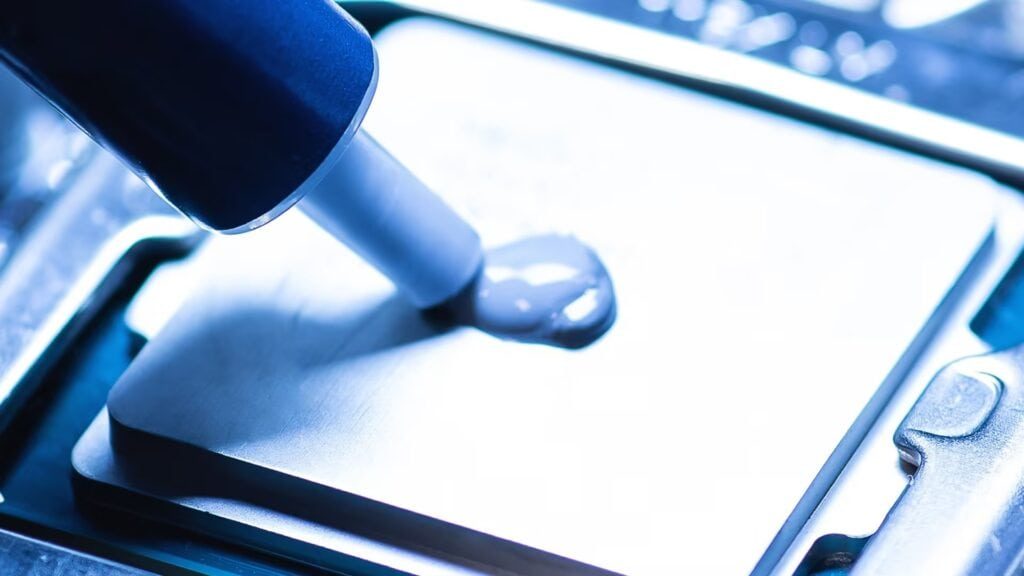The thermally conductive bonding adhesives are used widely across electronic components. It provides secure bonding and efficient heat conduction throughout the components. The bonding feature helps to eliminate the need for clips/clamps/screws and saves time by providing accurate bonding. Thermal bonding adhesives are available in paste, film, and tape form.
A mixture of several ingredients is used in the manufacturing of bonding adhesives. These ingredients include synthetic resins, fillers (silver/graphite), inorganic materials (aluminium nitride, boron nitride, alumina), and others (metal oxides/ceramic microspheres). Now, let’s move towards the features, types, applications, and other considerations of thermal bonding adhesives.
Features of Thermally Conductive Bonding Adhesives
– Thermal Conductivity
As usual, the notable feature of bonding adhesives like other thermal products is the range of their thermal conductivity. This indicates how effectively it will manage the rising temperatures. Overall, the thermal bonding adhesives offer thermal conductivity of 1 W/m·K to over 10 W/m·K. [NOTE] The difference in this range may vary depending on the type of bonding adhesive.
– Bonding Capability
Apart from heat management, the bonding feature of thermal adhesives is undoubtedly a good source of attaching two mechanical components. They can easily bond with metal, plastic, ceramic, PCB, and other semiconductors. Although such bonding is only recommended for lighter implementations, still has a significant impact when one needs to eliminate the hurdle of using screws or clips.
– Electrical Insulation
Specific to electrical insulation, most thermal bonding adhesives offer this feature. During the transfer of heat between the components, there are chances of short-circuits and other damages. The electrical insulation of thermal adhesives avoids so and ensures safe performance. Thermal bonding adhesive provides electrical insulation to ICs, transistors, sensors, and others.
– Operating Temperature Range
The performance of electronic components at minimum/maximum temperature refers to the operating temperature range. The more in minus and more in plus is considered a perfect range. In this case, thermally conductive bonding adhesives can offer an operating temperature range of -60 to +350 degrees Celcius. These ranges may differ depending on the type of bonding adhesive.
– Flexibility/Hardness
Some electronic components require the flexibility of thermal adhesives to manage vibrations and mechanical stress. Others require hardness to stay in a constant shape or manner while at peak usage. In this case, thermal bonding adhesives offer flexibility and hardness depending on their type. Like, epoxy-based offers hardness whereas silicone-based offers flexibility.
Types of Thermal Bonding Adhesives
– Thermal Liquid Adhesives
As the name suggests, the thermal liquid adhesive is a liquid/flowable material. This type of thermal bonding adhesive offers higher thermal conductivity and mechanical bonding of electronic components. It is applied in liquid form and after curing it becomes solid up to the required level and starts managing the heat.
Key Features
- It offers a high thermal conductivity.
- It also offers a high mechanical bonding.
- It is the best option for irregular surfaces.
- It also provides electrical insulation.
- It is curable at room temperature, heat, and UV.
Best Suitable For
- Heatsinks
- EV Batteries
- ICs (Integrated Circuits)
- Semiconductors
– Thermal Film Adhesives
Thermal film adhesives may be a solid choice if you want an easy-to-use type of thermal bonding adhesives. It is a good solution one can prefer for managing heat and creating a strong mechanical bonding. Film adhesives are thin, heat/pressure activated, and can be sized into required dimensions and shapes.
Key Features
- Film Adhesives are easy to Use
- Their thin size ensures better heat conductivity in bonded areas.
- They provide strong bonding when heat is activated.
- They also provide appropriate electrical insulation.
Best Suitable For
- LED Lighting
- Heatsinks
- Semiconductors
- Industrial Electronics
– Thermal Tape Adhesives
These are double-sided tapes featuring thermal conductivity and bonding capabilities. Although the thermal conductivity of tape adhesives is not recommended for high-end usage, still is the best fit for moderate-level usage. It is easy to apply with no technical knowledge even more easier than thermal film adhesive.
Key Features
- It is easy to use and available in multiple thicknesses (even by beginners)
- It does not require any curing.
- It offers a moderate level of thermal conductivity.
- it also provides an appropriate level of electrical insulation.
Best Suitable For
- LED Lighting
- Heatsinks
- PC/Laptops/Consoles
- Electronic Sensors Bonding
Applications of Thermal Bonding Adhesives
| Components | Type of Thermal Bonding Adhesive |
|---|---|
| Electronics Industry | Thermal Tapes & Thermal Film & Thermal Liquid |
| Automotive Industry | Thermal Tapes & Thermal Film |
| Medical Industry | Thermal Liquid & Thermal Film |
| Military & Aerospace | Thermal Liquid & Thermal Tapes |
| Energy Industry | Thermal Liquid & Thermal Film & Thermal Tapes |
Electronics Industry:
The most common use of every thermal management product is in the electronics industry. The same is the case here for the thermal bonding adhesives. They are used in various electronic industry products/components like computers, consoles, GPUs, and smartphones.
– Automotive Industry:
Thermally conductive bonding adhesives are widely used in the automotive industry. Modern cars are manufactured using advanced features, where components need efficient heat management and bonding. Examples include ECUs, EV batteries, Sensors, and Lighting Systems.
– Medical Devices
Thermal bonding adhesives hold a meaningful role in medical devices controlling their heat management and bonding. Core examples may include, CT Scan machines, Ultrasound machines, MRI machines, Dialysis machines, and Blood Pressure/Sugar machines.
– Military & Aerospace
Advanced military and aerospace equipment have highlighted the need to execute better thermal management solutions. Thermal bonding adhesives have a key contribution to these departments. Examples include Radar Systems, Satellite Systems, and Military Gadgets/Devices.
– Energy Sector
Thermal bonding adhesives also have a significant role in managing the thermal duties of the energy sector. It ensures the long-term performance, reliability, and durability of energy equipment. Its notable examples are Solar Panels, Wind Energy Systems, Energy Storage Batteries, and others.
JiuJu Thermal Interface Materials
For the last 2 decades, JiuJu has been serving the thermal industry with its renowned thermal interface materials. They have expertise in manufacturing a wide range of thermal products proving to be a strong safeguarding shield against rising temperatures.
The core thermal products at JiuJu are thermal paste, thermal pads, thermal grease, thermal gel, thermal bonding adhesives, and many more. The huge monthly production (20 Tons Plus) is a clear sign of their sales record and positive reputation in the market.
JiuJu has long-term partnerships with more than 500+ clients worldwide. There is an up-to-date manufacturing culture inside the JiuJu with the latest machinery, quality raw materials, a team of experts, 24/7 customer support authorities, and smooth storage/shipping departments.
If you want to collaborate with JiuJu for quality products, contact their support team for product specifications and quotations. Their team of experts will provide complete product counselling, wholesale rates, delivery/shipping options, and smooth long-term business relationships.
Concluding Thoughts
Like other thermal interface materials, thermally conductive bonding adhesives are also a great source of managing heat dissipation and mechanical component bonding. They are available in different types with different features meeting all the requirements on a broader level. Before deciding on a bonding adhesive, one must have clear information about its product compatibility, specifications, and nature. The right adhesive for the right product will result in optimum performance, reliability, and durability of components.
Visit JiuJu’s official website for more details and product information.





